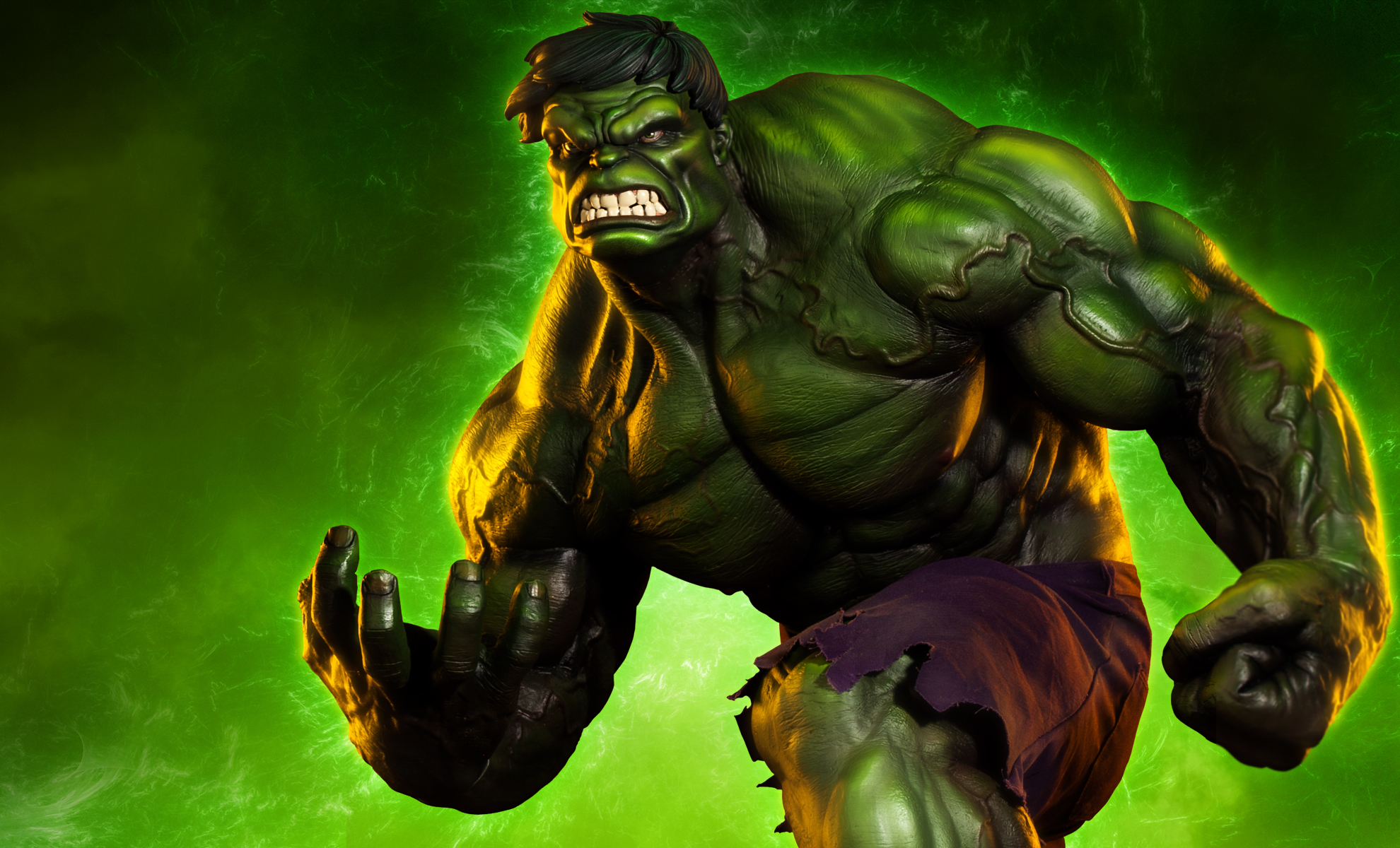Since his inception The Incredible Hulk has been held up as an analogy for many things; the 60’s counter culture urge to rise up against repression – a reaction to the frustrations of war and the fear of nuclear side effects/ mutations and even a study on anger and justified violence. Stan Lee called the character ‘a golem’ in line with Jewish myth, and recalled Hulk as the Atomic Age Jekyll and Hyde. With so many dissonant personalities emerging over the years of his publication history it’s difficult to give a cohesive history of what exactly ‘Hulk’ really is when compared to his character history as an off-shoot of a gamma bomb experiment gone wrong and the fractured psyche of genius nuclear physicist Bruce Banner.
What we can agree on, is that from his initial appearance, although retconned and retconned again, Hulk emerged from the Gamma Bomb explosion of Banner’s own design a grey behemoth who would revert to Banner by sunrise, and Hulk again at sunset. This Hulk was different to the more commonly known version; a rampaging, monosyllabic, childlike engine of destruction.And although the actual reasoning behind this change would be more one of simple editorial practicality (The grey coloring during his first appearance in Incredible Hulk #1 proved problematic; ‘resulting in different shades of gray, and even green, in the issue’), the effects of the later change to ‘Green’ for the character and ‘childlike’ to the personality would be the catalyst for a long list of personality changes that would result in one of the most seemingly schizophrenic characters in comics.
The reasoning behind the many sides of Hulk was elaborated on by writer Bill Mantlo who took the reins of the Hulk series with issue #245 (1980), when the writer alluded to Bruce Banner’s child abuse at the hands of his violent father, who would be shown in later issues to go one step further in traumatizing his son, by murdering Bruce’s mother.
The many faces of Hulk are hypothesized as a side effect of this abuse, which would later under the writing tenure of Peter David (during his 12 year run from issue #331 – 1987) be diagnosed as Multiple Personality Disorder, or Dissociative Identity Disorder. Dissociative disorders including DID have been attributed to disruptions in memory caused by trauma and other forms of stress, but research on this hypothesis has been characterized by poor methodology and in some cases doesn’t add up. But it would make perfect sense that Banner, especially from his early appearance as a troubled Nuclear physicist working on a Gamma Bomb under the watchful, and somewhat aggressive eye of General Thaddeus ‘Thunderbolt’ Ross would create a side personality, an aggressive alpha male personality composed of Banner’s smarts, and a cunning of his own, internally to combat his own insecurities. Banner was in a difficult situation, with feelings for the General’s daughter Betty and overshadowed by two existing powerful male figures in her life – Ross and Major Glenn Talbot, Betty’s husband.
This personality Banner created – the Grey Hulk – who would later seemingly devolve into a rampaging green behemoth was the same ‘Joe Fixit’ Hulk from later issues (Incredible Hulk #324 onwards) and I contend a product of Banner’s secret rage, inadequacy (Major Glenn Talbot was about engaged to the woman he loved, Betty Ross, General Ross’ daughter, and both Ross and Talbot were ‘real men’ and treated Banner with scorn) and lust (for Betty Ross). Described as; cunning, crafty, hedonistic, arrogant, and distant, this Hulk persona, still in his inception was later suppressed by Banner using the gamma ray machine he creates to return his intelligence to Hulk’s body.
This alters Hulk’s color to green and makes Banner weakly and sick when he reverts from his monstrous transformations. Overuse of this machine, which could be categorized as continual stress on Banners part, would later induce the better known Savage Hulk persona, the hulking monosyllabic beast he is best known for, and has been a continuous presence throughout Hulk’s publication history.
But this persona, while best categorized by his catch-phrase ‘Hulk Smash’, was hunted by the US Army and served as an Avengers antagonist, yet more often than not expressed an interest in being left alone. The reasons for this I contend, are that while Banner may have been suffering from DID, his strongest human instincts, the ones wired for survival, are what causes the manifestation of this particular Hulk. And the reason that no matter how many times Hulk’s personalities change or evolve; when under extreme stress or experiencing traumatic external events, it seems the Savage Hulk emerges prevalent as the one aspect of Bruce Banner’s persona that he cannot keep suppressed; his innate human survival instinct.
This has been the case when Banner existed as The Grey Hulk, and later the Merged Hulk or Professor Hulks (an amalgamation of all 3 of his personalities, including Banner). Through his transformations Banner’s personalities found a way to emerge, but I contend that his transformation itself, is something that happens purely on an instinctual level, something that Banner has harnessed to varying degrees, but has never been fully able to control. This also helps explain why on the temporary occasions that Banner has managed to separate himself from Hulk it has nearly killed him and/or driven him temporarily mad.
This was also the case with his Hulk alter ego, when during one of these instances (manipulated by the ethereal villain Nightmare) Hulk emerged minus Banner as ‘Mindless Hulk’, an incarnation of Hulk, that without Banner to hold him in check, ran rampant and was completely impossible to control. Could it not be possible that ‘Mindless Hulk’ was simply Banner’s survival mechanism running rampant and without an anchor to hold it in check, thrashing out wildly in an attempt to relocate its host? This was similarly the case when Doc Samson separated Banner from Hulk and created an even less cognitive version of Hulk, who due to the separation from Banner eventually began to die, until reunited.
It’s also seems to be obvious that without Banner as his anchor Hulk continues to run unchecked and further towards a form of critical mass. When separated during the Onslaught Saga, this time round Hulk’s strength grew exponentially greater, and he also began to leak radiation until he was restored with his Banner ‘anchor’. The suggestion is, that this time round as opposed to just dying from the separation, he might have actually exploded.
Returning to the idea of Banners ‘Hulk’ transformations as an ‘Instinctual Reaction’ to gamma mutation, and the personalities as a side effect of this new form of expression, we should note that the instincts, best described as inborn complex patterns of behavior that must exist in every member of the species and that cannot be overcome by force of will, are not just a reflex reaction to Banner’s external stress stimulus.
The absence of volitional capacity must not be confused with an inability to modify fixed action patterns as it seems Banner as a child was able to alter his natural instinct towards survival and anger, a possible inborn genetic trait passed on from his violent and abusive father, suppressing it enough that he would later develop great internal, unreleased rage and the manifestation of DID.The Savage Hulk, most often compared to Bruce’s inner child, could thus be best described as Bruce’s survival instincts finally given release, in the form of a rampaging beast, fused with the child he was when he first learned how to suppress them.
Further questions might arise however, when we consider that Banner’s psyche has massive numbers of personalities seemingly suppressed within. Guilt Hulk, Devil Hulk, Dark Hulk, Shrapnel Hulk, The Maestro and many more are all persona’s that have been witnessed within Banner, and only some of whom have ever found an outlet.
The reason only some have emerged may be down to the strength of those said persona’s abilities to override or learn beyond Banner’s initial ‘survival instinct’ transformation. And while the personas have been combined, have run loose, or in the case of the Dark Hulk, a seemingly hostile extra-dimensional possession, mixed with Banner’s own dark feelings, (and a possible forerunner to the Maestro persona) exiled using magic and psychic tactics (via Doctor Strange and Namor) the manifestation of Banner’s survival has always been a reversion to the childlike ‘Savage Hulk’; the suppressed survival instinct of Bruce Banner as a child, given voice through the child he locked away, and with an abnormal cellular structure inherited from his father’s exposure to radiation which enabled his unique physiology to harness the gamma radiation from his own bomb rather than be annihilated by it.
No matter how much Banner’s DID personalities work around it (Joe Fixit, Maestro, Green Scar, The Professor etc.) the reason they will never retain the same dominance as ‘Savage Hulk’ is that without Savage Hulk, the ultimate expression of ‘fight’ instead of flight and survival through adaptation (advanced strength, Healing and Durability) Banner would return to a level of vulnerability his body has since rejected, and die. Thus Banners survival is ironically linked to a transformation that gives his instinct form, paired with the personality he suppressed that is least equipped to survive. An abused Bruce Banner as a boy.
Hulk’s continued mantra ‘Hulk Is The Strongest One There Is’ also gives credence to the idea that Hulk is not only Banner’s survival mechanism in action, but by his sheer survival and subsequent mutation, a form of Darwinian evolution given unnatural possibility through science. Hulk is ‘the strongest one there is’ not only as a physical entity, but in his continued evolution and adaptability as the purest sense of ‘survival of the fittest’ given form. The fact that human survival hinges on our ability to out-think our surrounding dangers further builds on the idea that while Hulk is a creature of pure survival given physicality, it is the very human instinct, and subsequent psychological variance that empowers him.



